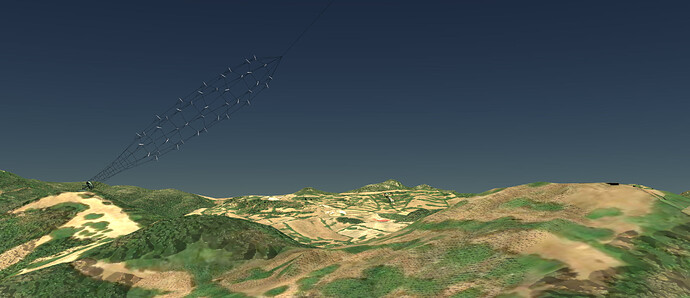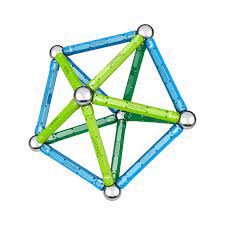Thanks for the detail on risks you perceive @tallakt brilliant
I’ll go through my take on your points…
Scaling the TRPT rings - Diameter will scale, length of TRPT shaft doesn’t need to. As diameter scales we will be able to move away from the inefficient but simple rod sections to tube sections , trussed ring sections for deeper effective wall width (2nd moment of inertia) and stable wider outer , then onto faired monocoque sections like an aerobie ring.
About network of network ideas… I am really into them. Why… We trust our kids to the safety of trampoline nets, we throw big nets safely out of the back of trawlers in the roughest waters, they expand and work. Net’s don’t tangle like single lines. Net’s are massively underrated in AWES in my opinion.
I roughly estimate that a standard Daisy Kite Turbine will work to at least 200kW without needing anything too smart.
Beyond that kinda scale you’re definitely wanting to farm in a controlled and land space efficient manner. And if all you can buy is unit scales you will want to array them in a neat efficient pattern (notice there are only 18 around near but not out at the perimiter of the topnet hexnet… So each turbine in that net, has space away from the stablising overhead outer net. Net of net designs are still sketches and the parameters can all still be tweaked.
To improve on a standard Daisy > 200kW we may need to get crafty with launch and land to the ground station using centre line tension and a backline able to be upwind of the turbine head… which an overall net just has by default. The big leap is - launching large rotors will not require large diameters. They will expand dynamically once rotation is established. Large diameters destroy the rigidity which you can achieve with lightweight rings. For the next few scales we have enough rigidity for simple ground handling routines. The biggest risk of tangle is blades folding into the net, So for now we will keep the lines stretched out with a backline handling bot. In a tight net the bridles (and potential small top bridles) hold the rigid rotor blades fixed in relation to the net and rigid rings.
Yeah TRPT is a head fuck for sure. Some things just are weird. A skirt with hoops already in it stay out at a wide diameter. A Scotsman has to spin to make his kilt fly out and embarrass his aunties. Oddly, A hula skirt doesn’t have hula hoops in it… but it does have loads of tether lines, go figure.
2022 - Of course there’s been more than just planning and designing. (both massive and essential jobs) You saw a very rough launch mast prototype last week. There are folks developing much larger controlled lifter style kites than I have yet needed to. Yes I’m gutted to only be 1 human too.
Slow evolution in tech happens when there’s less urgency. Necessity is the mother of invention. War accelerates tech. For the last decade I’ve been at war with fossil fuel dependence.
Yeah the network of networks is a long way down the road. It’s not the only goal to score though. A 50kW autonomous Daisy will be very valuable product and should be able to maintain a company or 5.
With that resource, work on larger schemes will be more obtainable.
Thanks - yes Daisy has been a huge leap. Look closely though you’ll see so much you would want to improve on. A few improved features will enable all of those goals you state, 1000 hours auto - yeah, scaleup - yes, three under a net - yup, Auto launch land - why not? All doable.
In terms of products and prototypes. There isn’t 1 suspension bridge or yacht. There are many and they come in many sizes and are finished to many different standards. Not to say build it and they will come… You are right we should aim for bang for buck,… Something like a classy cheap reliable 50kW automated kite turbine should be about the right size spin out product from the work we are doing developing scale.
Thanks again @tallakt






